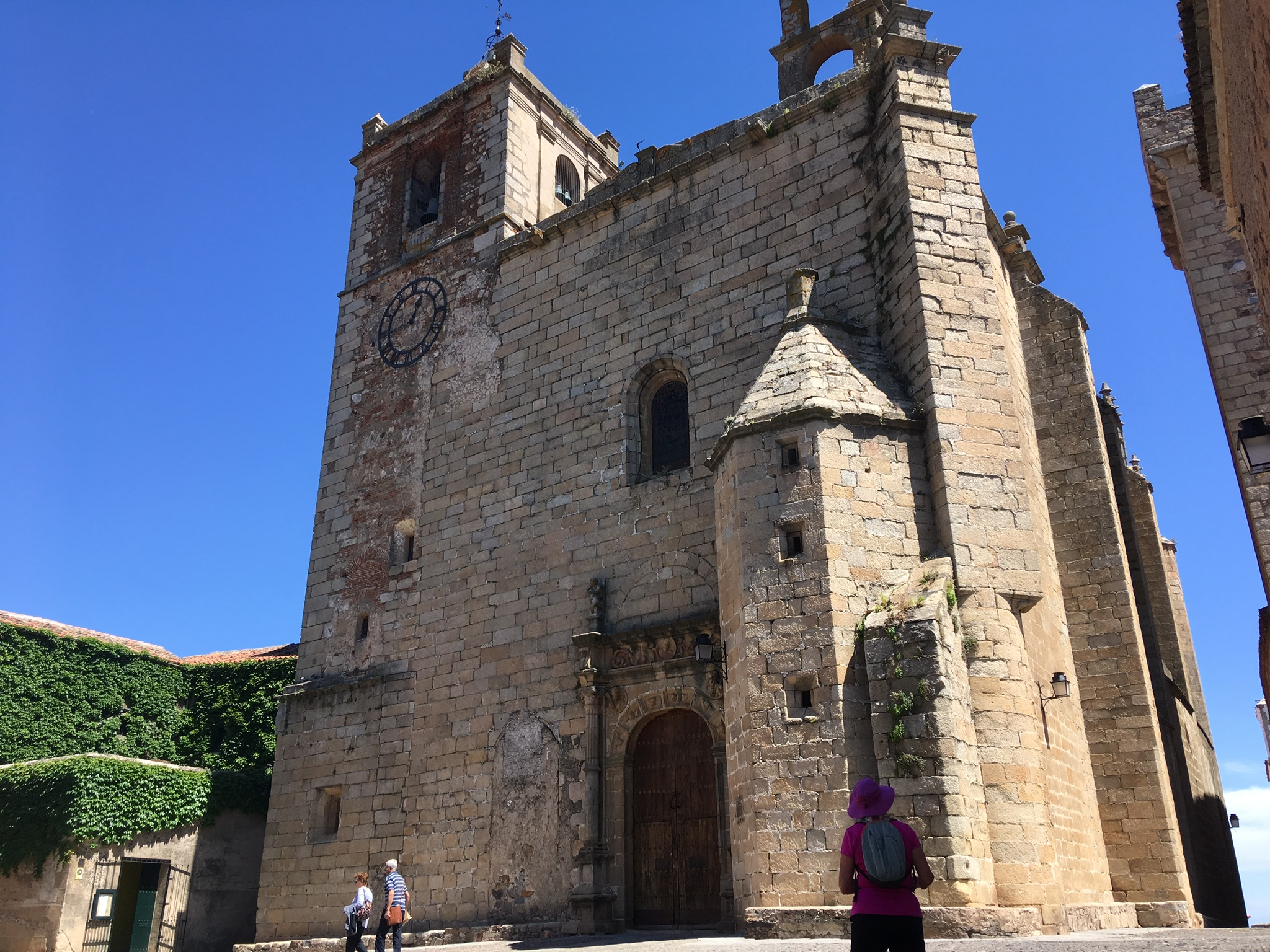This is the home of 28 palaces, not all built for royal families but also wealthy families built them as their home. There are 30 medieval towers, others, older, are a mixture of Roman, Islamic, Northern Gothic, and Italian Renaissance. Although the Romans were here in 25BC, there is evidence of human occupation dating back 25,000 years.
It is easy to lose your way as streets go in a variety of directions over undulating hills, sometimes sharply so, with stairs or non-car roads, always cobbled. Around a corner may be a Roman tower, a medieval church, a parador, a palace, an Arabic touch, and then a small cafe appears, an intimate restaurant or hotel (luxury or not). But it is all old.
I did not see modernity cast it’s shadow on an eighth century wall, darken a tucked away medieval door, or taint a third century arch. All is pristine and the timelessness is maintained for hours as the old part is large enough to swallow the tourist hordes. It is not only humans who visit but also birds.
While the storks continue to make their scary homes on roofs, towers and poles, nearby there are occasional avian visitors. The region’s nature reserve has the world’s largest population of Spanish Imperial Eagles and Black Vultures which I mentioned sighting yesterday, and which sometimes excites the locals with their majesty.
They are monuments, like this city, which is heritage listed with UNESCO and was proclaimed a monumental city in 1949 – the third in Europe after Prague in the Czech Republic and Tallinn in Estonia – exotic company. We arrive back in the huge plaza where hundreds of children wearing t-shirts are playing sports in order to raise funds for a school mate who is doing it tough. We don’t know their situation but it is great to see the tight community spirit which probably deserves it’s own monument.

